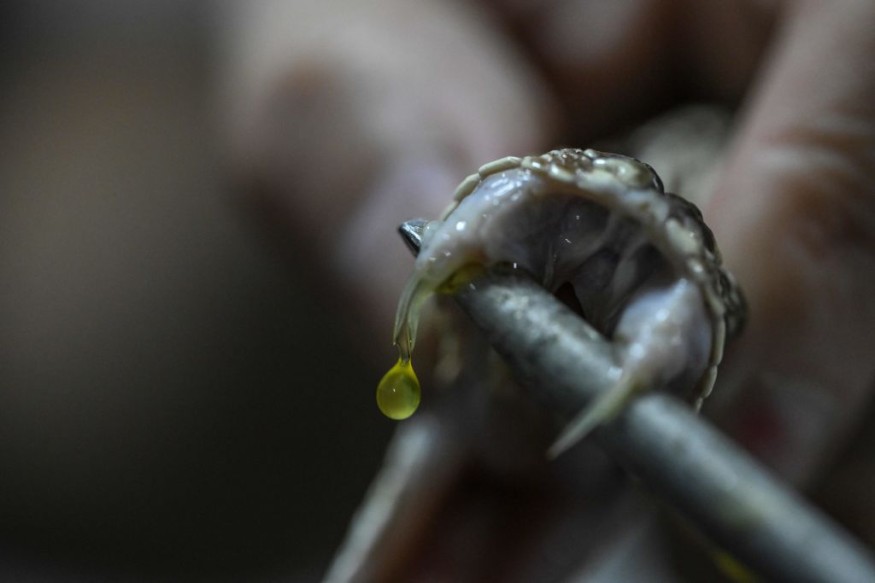The World Health Organization (WHO) indicates an annual incidence of 4.5 to 5.4 million snakebites, resulting in 1.8 to 2.7 million clinical cases and 81,000 to 138,000 fatalities from venom complications.
Limited access to life-saving anti-venom contributes to thousands of deaths in regions like India and sub-Saharan Africa. The complex production process involves horse blood, advanced labs, and handling deadly snakes.

Steps in Extracting Snake Venom
In the first phase, venom extraction begins by securing a snake's head to minimize the risk of bites. The handler employs a clear plastic disk to move along the snake's body, allowing precise head positioning. Once secured, the snake releases venom into a shot glass, mimicking a bite on the handler, with the venom later collected and frozen.
Billy Collett from the Australian Reptile Park extracts venom from numerous venomous snakes weekly. After collection, the venom undergoes freeze-drying at -56 degrees Celsius, preserving it.
The distinct colors of frozen venom include pink for Taipan, deep yellow for King Brown, and light yellow for Tiger snakes. Australian Reptile Park's venom has saved 250,000 lives in a country housing over 100 venomous snake species.
The subsequent step involves horses, crucial for anti-venom development due to their ability to naturally produce antibodies against snake venom. Horses have been integral to this process since the 1800s, drawing blood every two weeks after venom injections.
Horse blood, valuable for its antibodies, can fill a six-liter bag in under 30 minutes, with one bag costing up to $500. Plasma separation, antibody extraction, and eventual anti-venom production incur a production cost of $15 to $20 for a small vial.
How Snake Venom Kills
Snake venom originates in the snake's salivary glands located at the back of its head, akin to where saliva is produced. Hollow fangs, resembling hypodermic needles, aid in venom delivery. When a snake bites, its head muscles compress the venom glands, propelling the liquid through its fangs into prey flesh.
The composition of snake venom varies among species, and even snakes of the same species in different locations may exhibit slight differences. Injected toxins operate diversely, with neurotoxins targeting the nervous system, causing paralysis.
Haemotoxins affect the circulatory system, leading to burst red blood cells, blood clotting, or a significant drop in blood pressure. Myotoxins, impacting the muscular system, induce tissue death in muscles and impede muscle contraction, also known as necrosis.
Snakebites, Antivenom, and Medicinal Discoveries
Every year, millions of snakebites are recorded which results in thousands of deaths. Particularly in Asia and Africa, where numerous venomous snake species exist, agricultural workers frequently encounter snakes, and the proximity of hospitals can be a challenge.
Antivenoms, developed by injecting host animals, often horses, with increasing venom doses, produce antibodies that are extracted, processed, and purified for snakebite victims. Antivenoms are specific to particular snake species and can be costly, with patients in the United States charged thousands or even tens of thousands of dollars for a vial.
While snake venom toxins can harm humans, they also offer medicinal potential, with proteins from snake venom being utilized to develop drugs for conditions such as cancer, pain, high blood pressure, heart attacks, strokes, Alzheimer's, and Parkinson's disease. The proteins in venom from other animals, like spiders and scorpions, have also contributed to important drug treatments.
RELATEDA ARTICLE: Snake Venom Transformed Into Super Glue That Stops Life-Threatening Bleeding Within Seconds
Check out more news and information on Venom in Science Times.
© 2025 ScienceTimes.com All rights reserved. Do not reproduce without permission. The window to the world of Science Times.










